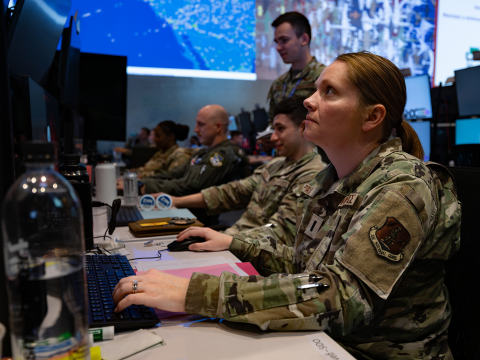Air-Sea Battle Concept Offers Transformation Opportunity
Implementing a new strategic doctrine will require a new way of doing business. The Air-Sea Battle offers more than just battlespace changes.
The steps necessary to achieve the Air-Sea Battle strategy may induce long-sought major changes in U.S. military force structure. Yet, some aspects will require game-changing decisions and shifts in priorities. Two retired flag officers-Lt. Gen. David Deptula, USAF (Ret.), former deputy chief of staff for intelligence, surveillance and reconnaissance, U.S. Air Force, and Adm. Patrick M. Walsh, USN (Ret.), former commander of the U.S. Pacific Fleet, outlined how Air-Sea Battle will affect the force at Joint Warfighting 2012 in Virginia Beach, Virginia. Gen. Deptula said that Air-Sea Battle has the potential of becoming an integral part of U.S. national strategies. And. Adm. Walsh offered that it involves trying to pull together a lot of pieces that otherwise are going in different directions, such as cyber and electronic attack. The admiral stated that the revolutionary part of Air-Sea Battle will be the unmanned arena. "We'll see self-forming networks, standing jammers, electronic attacks... Air-Sea Battle is our chance to start getting our arms around all these pieces," he said. Gen Deptula noted that it will require revolutionary networking capabilities. These would include information processing and exploitation on the system before being sent to the user. Describing the space architecture as very fragile, he called for alternative ways of rebuilding that architecture on land or in the air. But, above all, acquiring these capabilities will require a new way of designing the force. "We have to think out of the box," Gen. Deptula said. "We are not going to be able to get through the resource constraints just by buying less of what we already have. We have to open ourselves to new ways of doing business."



Comments